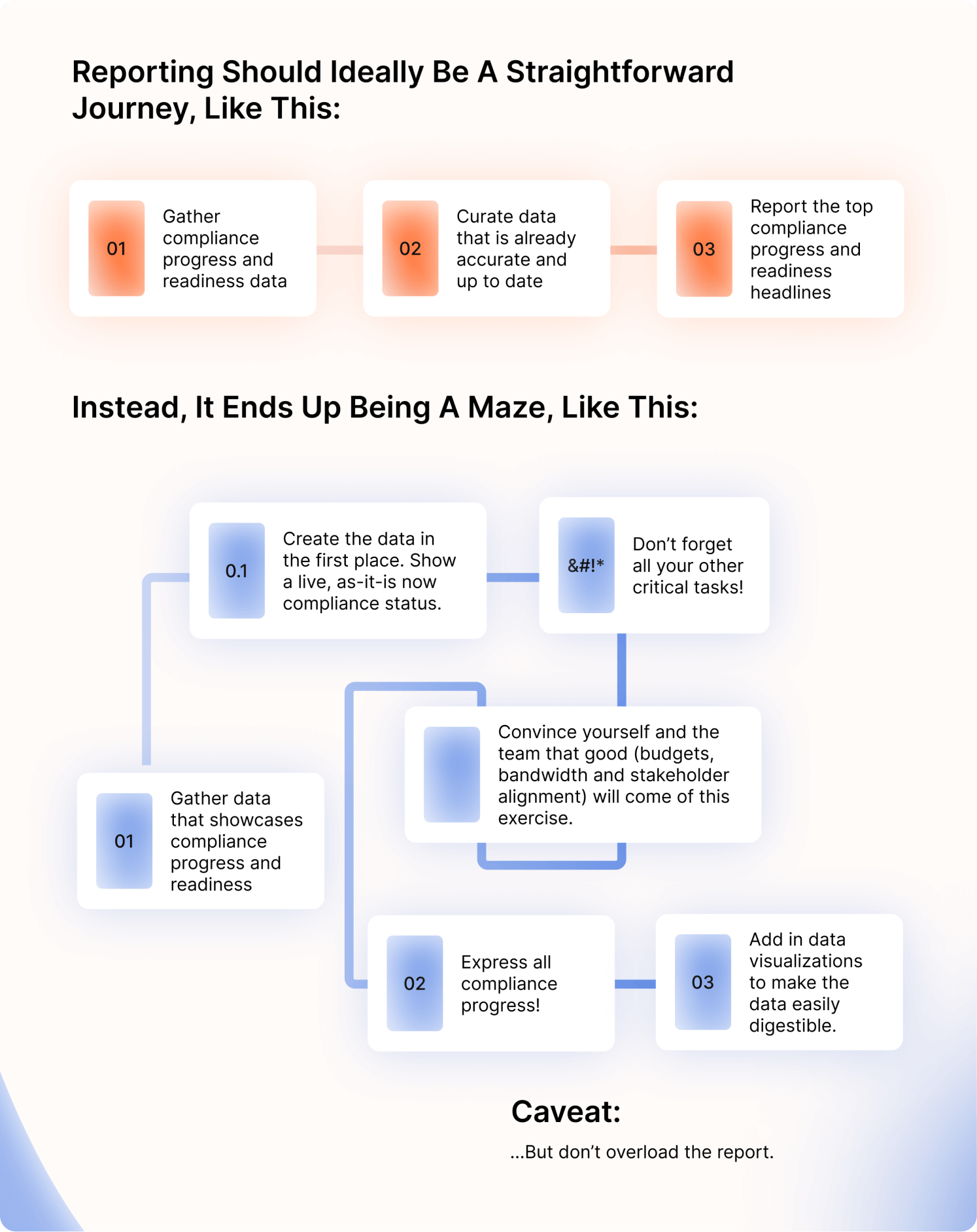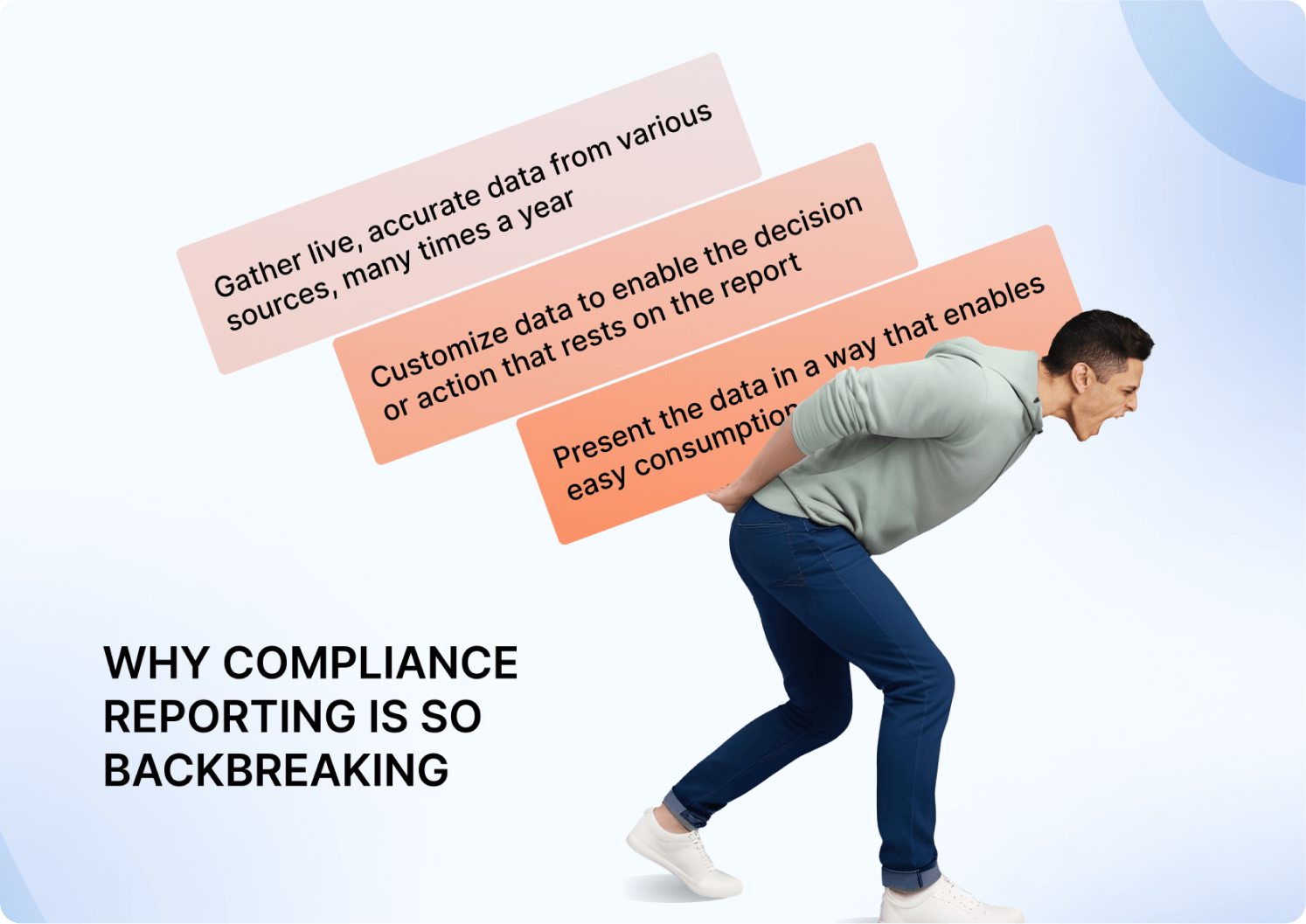Compliance & GRC reports weighing you down?
Payal Wadhwa
Sep 20, 2024

But why is reporting such a challenge? Unpacking the reporting challenge Challenge # 1: Gather tomes of data
To begin with, you need to gather all the data that bears witness to your compliance progress and readiness. This, in and of itself, is a herculean exercise.
Challenge # 2: Rewind. Create the data in the first place
But for you to even begin gathering data, it must exist in the first place. This means that compliance programs must be thoroughly documented, reflecting the status of controls and risks (at the time of generating the report). In other words, you need accurate, updated as-it-is-now data, which requires intense effort because you need to pull data from various sources.
Challenge # 3: Don’t forget about other critical tasks!
Getting hold of this current data not only consumes time (that you really do not have) but also effectively diverts your attention from real security activities that keep your organization and its customers safe. such as threat detection and response.
At this point, you’re telling yourself (and possibly the team that’s helping out, if you’re fortunate enough to have one) that reporting is a necessary part of your role, critical to you getting the budgets you need and the bandwidth that compliance action will call for within various departments, on product roadmaps, at decision-maker meetings, and so on. But it does nothing to improve your security posture. Nothing to actually safeguard your org.
Challenge # 4: Express everything without saying too much
Next, determining the appropriate level of detail to include without overwhelming the reader can often be a tough call.
Depending on the context, your reports much achieve the fine balance of illuminating gaps and progress without information overload. The last thing you want is for reports to be hard to read because this could dilute their value or, worse, lead to misinterpretations.
Challenge # 5: Say it with pictures!
Even when you are able to identify the right depth of data, you can’t just dump a ton of data into the report and expect the recipient to decode it. You need to provide data visualizations that make the data easy to consume and draw insights from.




